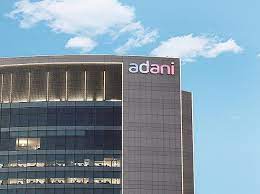On 24 January, the team at US short-seller Hindenburg Research planted a bomb in the Indian stock market. Their report’s explosive headline – Adani Group: How The World’s 3rd Richest Man Is Pulling The Largest Con In Corporate History – made no secret of who the target was.
As I watched the market value of the Gautam Adani-led companies erode in dramatic fashion, I decided to conduct a small survey among my friends.
I asked the simplest of questions – Will Adani Enterprises’ Rs 20,000-crore follow-on public offer (FPO) get subscribed?
The answer that came was a strong ‘Yes’.
Adani won that first round. After receiving a lukewarm response in the first four days, the FPO got slightly oversubscribed on the final day.
But nothing changed for the better. The butchering of the Adani stocks continued and the decision to call off the FPO was taken the next day to protect the interests of the investors in the offering.
That too didn’t help. In a matter of days, the stock rout wiped out almost $120 billion from the value of the Adani companies.
Things were getting out of hand. If the Adani stocks showed signs of bouncing back, they were pulled down through assaults from Citigroup, Credit Suisse, Standard Chartered, index provider MSCI, Moody’s and others at different points of time. Members of opposition parties also started raising slogans and demanding a joint parliamentary committee probe or a time-bound investigation by a Supreme Court-monitored panel into the allegations against the conglomerate.
To get a sense of where things were headed, I turned to my friends again to gauge their faith in a tycoon whose business empire was under siege following accusations of fraud from Hindenburg.
I asked the inevitable question – Can Gautam Adani turn the tide against all odds?
‘Yes’, came the answer again, though this time some said the bounce-back would be staggered over a longer length of time.
Let’s face it. Gautam Adani has gained an image of invincibility in recent years. And why not? He was ranked as the world’s second-richest person in September 2022, behind only Tesla founder Elon Musk. Though only for a brief period, he unseated Louis Vitton's Bernard Arnault and Amazon’s Jeff Bezos. With a net worth of $156.3 billion, he marched well past Mukesh Ambani’s wealth of $92 billion, according to the Forbes list of global billionaires.
Even when his fortune was taking a hit, he did not bring down the share sale price. Despite the share price of Adani Enterprises falling below the FPO price band and retail investors staying away, he got the issue sail through with support coming from family offices of high net-worth individuals (HNIs), top industrialists and foreign investors.
Gautam Adani has emerged as India’s most powerful businessman whose interests sprawl across diverse fields such as ports, airports, energy, roads, solar manufacturing, mining, edible oils and food, cement, data centres, defence aerospace, media and integrated agri products. He has large market shares in most of these sectors, has global ambitions and bets big on growth through acquisitions and debt. He, in short, has grown too big to fail.
When Hindenburg came out with those allegations of fraud, the Adani Group released a lengthy 413-page response, denying any wrongdoing, warning of legal action and attempting to evoke nationalist sentiments. “This is not merely an unwarranted attack on any specific company but a calculated attack on India, the independence, integrity, and quality of Indian institutions, and the growth story and ambition of India,” it said.
Since Narendra Modi took charge as prime minister in 2014, the image of ‘invincibility’ has been cultivated and spread, fusing it with nationalism. Modi’s oratory skills, personality-style politics, muscular speeches and love for large-scale projects have built an aura of ‘invincibility’. This has coincided with the decline of the Congress and the fading influence of mass caste-based regional parties in Uttar Pradesh and Bihar.
In WhatsApp groups which most of us are part of, we see this messaging of the ‘invincibility’ image creep in. They originate from some of our friends, from forwards, from somewhere. There is a thirst to feel invincible about our country, our prime minister, our civilisational history and our culture. It doesn’t matter if there are some distortions and jumps away from reality. There is a desire among many Indians to build in that ‘invincible’ image around them. This has also got imbibed in their thinking process.
Democracy is looked at within this spectrum of light. The individual’s role is defined within these parameters. The right and wrong line of thinking is tested in this sacred pyre.
Among many things, Modi has brought a new economic fire burning in India. The vision is to have domestic businessmen dominate sectors while foreign investors can put in money. These business houses would scale up, become national champions and spread their wings outside. The process would involve tremendous market consolidation.
Gautam Adani sensed he would play a key role in driving the infrastructure-and-solar-panels piece of Modi’s vision. He also wanted to extend his line of business activities to other areas. Besides being the largest ports and airports operator in India, he got into the cements business last year by acquiring Switzerland-based Holcim’s 63.1% stake in Ambuja Cements and 54.5% holding in ACC Ltd.
He also acquired news broadcaster NDTV late last year and said in an interview to the Financial Times that he saw it as a “responsibility” rather than a business opportunity. “Independence means if government has done something wrong, you say it’s wrong. But at the same time, you should have courage when the government is doing the right thing every day. You have to also say that,” he said in the interview.
There seemed no stopping Adani’s ambition and expansion drive until the Hindenburg report claimed to present evidence that the “$218 billion Indian conglomerate has engaged in a brazen stock manipulation and accounting fraud scheme over the course of decades”. It flagged concerns about the group’s debt levels and the use of offshore tax havens such as Mauritius and the Caribbean islands.
“The key listed Adani companies have taken on substantial debt, including pledging shares of their inflated stock for loans, putting the entire group on precarious financial footing. Five of seven key listed companies have reported ‘current ratios’ below 1, indicating near-term liquidity pressure,” the report stated.
Three weeks after the Hindenburg report came to light, Adani’s ‘invincibility’ image has suffered a jolt. Amid the rout in Adani stocks, the share prices look less mighty. The Supreme Court is hearing pleas relating to the Hindenburg accusations, an expert panel is being set up, and markets regulator Sebi has told the apex court that it is probing these allegations as well as the movement of share prices.
Still, Adani is facing less of a storm in India. Despite some opposition parties staging protests, the government has stayed silent on the issue. Adani’s business footprint has also extended to opposition-ruled states like West Bengal, Rajasthan and Kerala. Amid these contradictions, it remains to be seen how effectively vocal the political opposition will be against Adani.
The Indian banks have said that they are not unduly worried about their loans to the Adani group as their lending has been against cash flows and tangible assets of the companies and not against shares as collateral. While admitting that the situation is fluid, they have indicated that there is no need yet to put tighter screws on the sanctioned loans. According to many bankers, the problems will start only if projects get delayed and cash flows are impacted.
The check on the Adani group has primarily come from the international institutions. After the Hindenburg report and the rout in Adani stocks, Citigroup, Standard Chartered and Credit Suisse have stopped accepting the group’s bonds as collateral on margin loans. Moody’s cut its outlook for four Adani companies including Adani Green Energy, after their market values went through a “significant and rapid” decline. S&P lowered its rating outlook on Adani Ports and Special Economic Zone (APSEZ) and Adani Electricity to negative from stable.
For Adani, the overseas investor sentiment is important to regain as the loan exposure of banks in India is just around Rs 80,000 crore of the group’s over Rs 2 lakh crore total debt. As per Bloomberg, the group sourced more than $8 billion from international bond buyers in recent years, while tapping global banks for at least as much in foreign-currency loans.
The Adani group has over $2 billion of bonds and a $4.5 billion bridge loan maturing by the end of next year, Bloomberg reported. This gives Adani time to sort things out and fulfil the debt repayment obligations. The advantage is that the projects are cash generating. But the group will require capital infusion to keep all the growth engines in high motion. If the current projects get completed as per schedule, it will ensure future cash flows for the group which is already under pressure to reduce its debt weight.
In the race for supremacy, Adani has accumulated a mountain of debt. The main challenge for him is to cut the group’s debt pile and access new capital. This will become tougher the longer the volatility in the market continues. Though there has been some rebound in the Adani stocks of late, there are no signs yet that this will sustain.
Adani faces pressure to scale down capital expenditure plans, retrieve pledged shares, conserve cash and regain investor confidence. In this backdrop, Adani Power shelved its Rs 7,017-crore plan to acquire DB Power, which owns a 1,200-megawatt coal-fired power plant in Janjgir Champa district of Chhattisgarh. The deadline to complete the transaction was allowed to expire on February 15, 2023.
Will this be the way to go for Adani? Temporarily halt acquisitions, reduce debt and get rid of some of the assets like cement? Or even get a partner to ride his colossal and diversified business empire?
The political economy that has been laid is facing challenges. In this era which thirsts for ‘invincibility’, Adani feels he is destined to play a big role. Under the current circumstances, there are some who are suggesting that Adani can shed pieces of his empire and grow in focused areas like infrastructure and energy.
This is no way India’s most powerful billionaire would want to finish.






